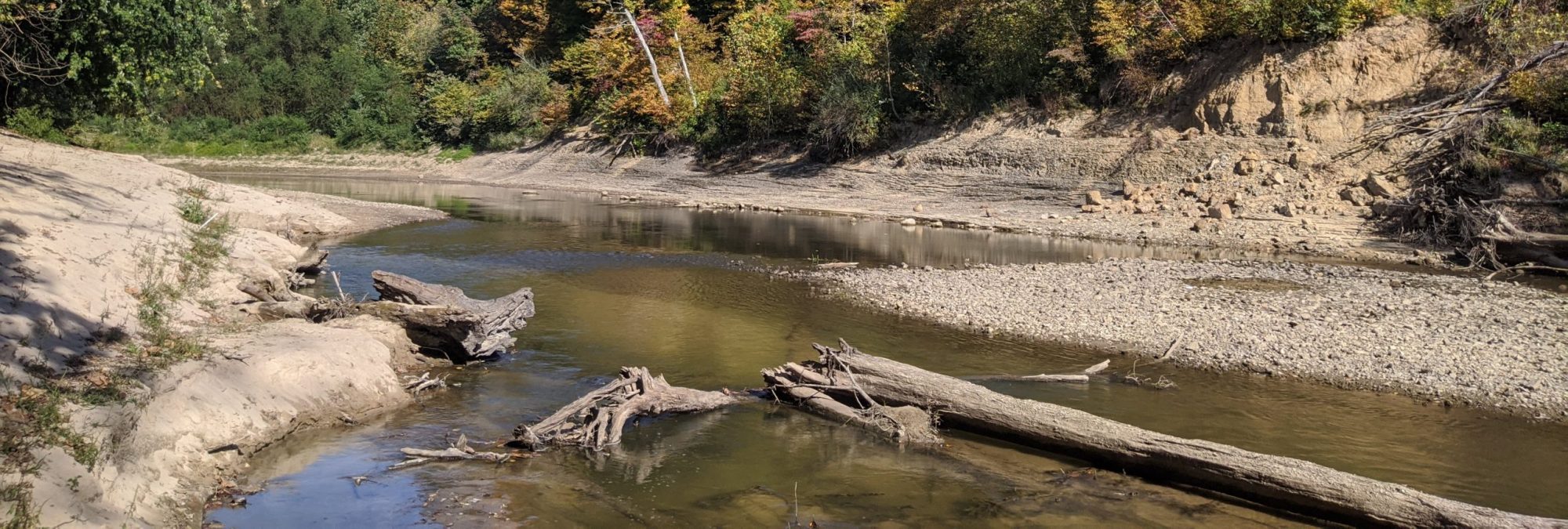Conservation Reserve Enhancement Program (CREP)
The Stream Ecology Lab has two research programs dedicated to the Illinois Conservation Reserve Enhancement Program (CREP): CREP Aquatic Life Monitoring and CREP Easement Monitoring .
The CREP Aquatic Life Monitoring Program team looks at the impacts of CREP on fish, macroinvertebrate, and mussel populations throughout watersheds that are eligible for CREP enrollment (Illinois River Basin and Kaskaskia River Basin).
CREP Easement Monitoring is made up of a team of conservation resource specialists whose role is to bridge the gap between the Soil and Water Conservation Districts, IDNR, the scientific community, and most importantly, the landowners. These positions are dedicated to support multiple agency partners with: CREP easement enrollments, monitoring, habitat management, and support for federal CRP/CREP.
Assessing Population Viability
We are assessing population viability and habitat preference to produce habitat suitability models for Illinois state threatened species, Eastern Sand Darter and River Redhorse. Our objective is to evaluate the distribution, abundance, and habitat preferences of these two species in the Embarras and Kankakee Rivers, respectively. We will also identify possible effects of human disturbances and include this data in the habitat suitability models for each species in their respective watersheds. Additional species and GIS-level data will be used to predict the potential distribution throughout the state. The modeling effort will be expanded to include two additional darter species and two redhorse species, respectively, to assess ecological niche partitioning with our targeted species. These models will be used to inform the Illinois Department of Natural Resources on the distribution and population viability of these two state threatened species, engaging the Illinois Wildlife Action Plan goals and efforts through their Streams Campaign, and conservation planning for Species in Greatest Conservation Need.
Modeling Freshwater Mussel Distribution
In this study, we generate Maxent species distribution models (SDMs) at a management-relevant spatial resolution for most mussels found throughout the Midwestern United States.
Prioritizing Illinois Protected Lands
This project aims to prioritize Illinois Nature Preserves, Illinois Natural Area Inventory sites, and Biologically Significant Stream segments identified as Focus Areas within the Illinois Wildlife Action Plan Streams Campaign for protection and stewardship based on NCT quality and SGCN presence.
Updating Illinois Stream Characterization and Assessment
This project will update the BSC and BSS by developing biological references based on species distribution models for fishes, freshwater mussels, and EPT (Ephemeroptera [mayflies], Plecoptera [stoneflies], and Trichoptera [caddisflies]) in wadeable streams statewide.
Small Mouth Bass Long-Term Assessment
We are currently monitoring Smallmouth Bass populations in several Illinois rivers, with a focus on providing information needed to address low abundances in the Mackinaw River following a decline circa 2000.
Jordan Creek Monitoring
Jordan Creek is a small stream in Illinois that offers unique research opportunities because of how extensively it has been studied since the 1950s. Starting when Dr. R. Weldon Larimore compiled a list of fish species and habitat conditions in Jordan Creek for his 1952 paper “An inventory of the fishes of Jordan Creek.” In this study we aim to continue monitoring the changes in the stream while providing an opportunity for an early-career individual to get their feet wet.

